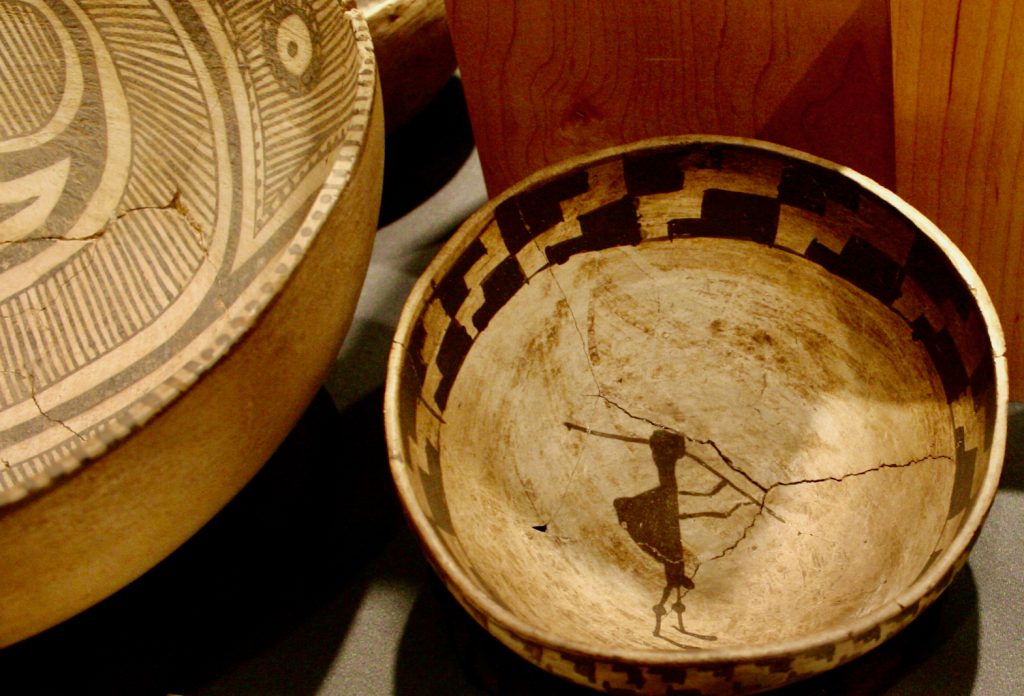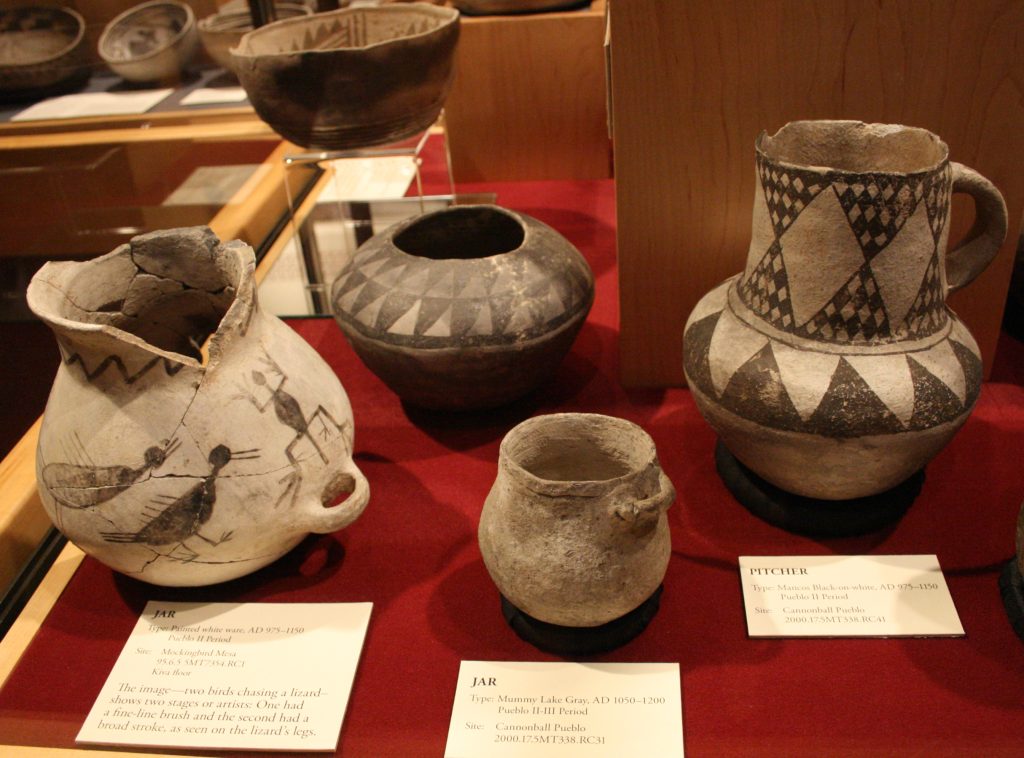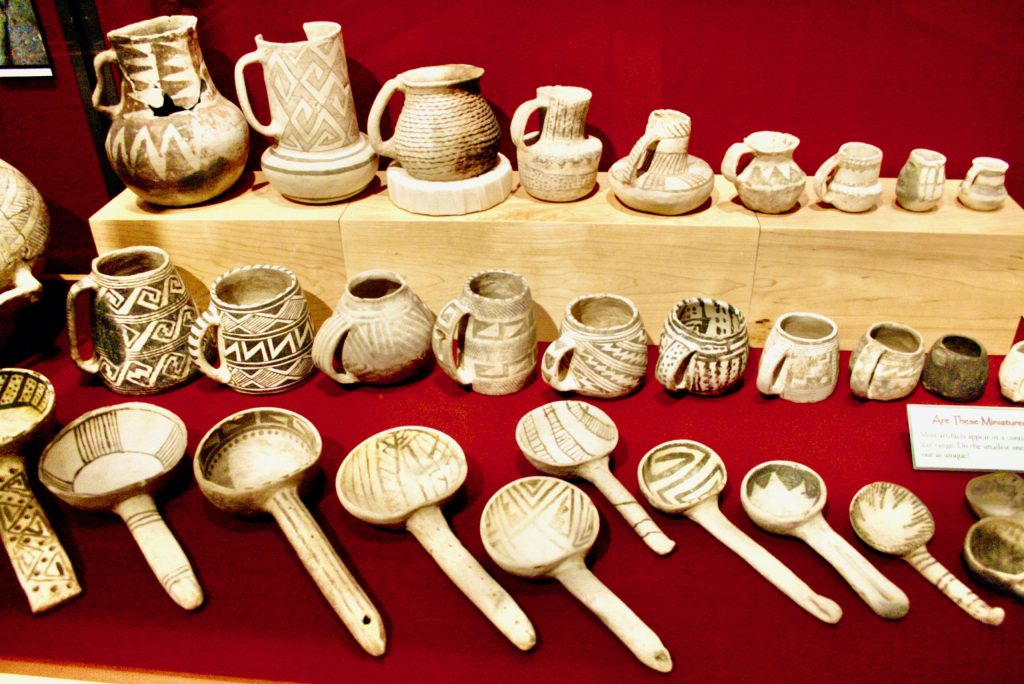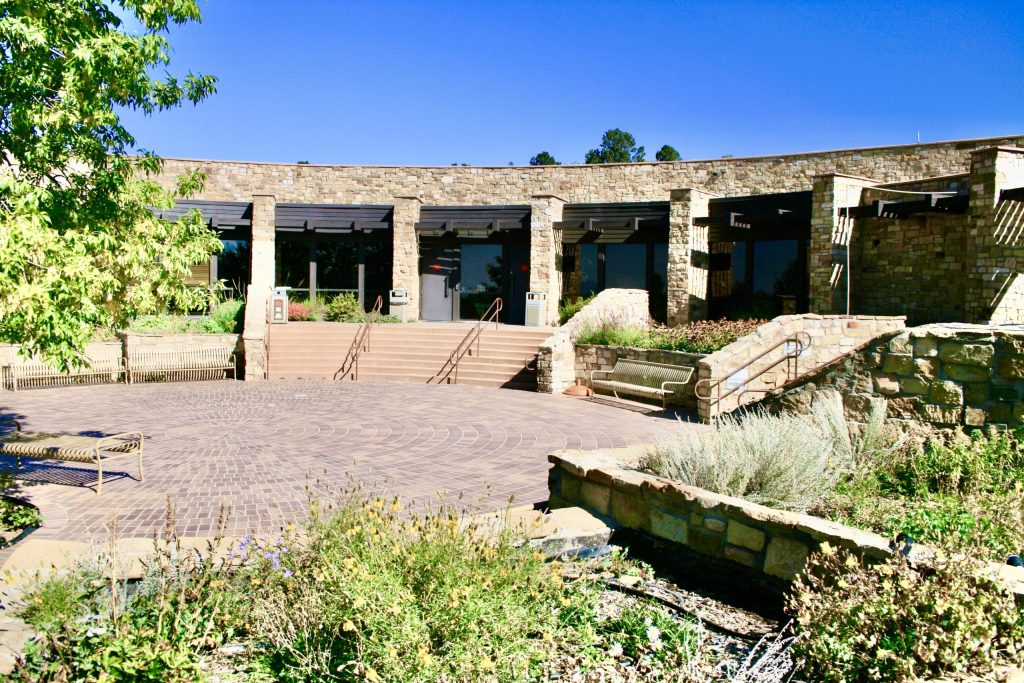Originally published in November 2008; updated May 2023
Ten miles from Cortez, Colorado, is the Canyons of the Ancients Visitor Center and Museum, the a gateway into Canyons of the Ancients National Monument. This first-rate museum should be your stop if you wish to understand and better appreciate the archaeological treasures of the Ancestral Puebloan people (formerly called the Anasazi, now considered to be a pejorative term.) These people were the ancestors of current Pueblo tribes of the American Southwest, and they flourished in the Four Corners region hundreds of years ago.

The flute player, Kokopelli, adorns this Ancestral Puebloan bowl, displayed at Canyons of the Ancients Museum. Kokopeli is a hunchbacked, fertility character known for his music making, dancing, and for spreading joy . He appears in ancient Ancestral Puebloan art throughout the Southwest. ©Laurel Kallenbach
First, some background on Canyons of the Ancients National Monument. Declared a National Monument in 2000, this unique, federally protected area—176,056 acres—contains the highest known density of archaeological sites in the United States. More than 6,000 ancient sites, including cliff dwellings, kivas, and rock art have been identified within its boundaries.
I’m an afficionado of both archaeology and museums, and this educational center lets you see and learn about the artifacts—which you won’t see in the field. I learned about kivas (ceremonial, subterranean, circular rooms) and how corn was ground by hand with stones. I even eye-balled some pottery sherds under a microscope. And I marveled at beautifully preserved examples of 900-year-old pottery and tools.

These jars and pitchers, which date from between 900 CE to 1200 CE, were excavated from the lands that are now Canyons of the Ancients National Monument. ©Laurel Kallenbach
I also loved the philosophy of education and cross-cultural understanding at this museum. When my husband and I visited in 2008, there was a children’s discovery center where you could touch a dog-hair weaving and grind corn between rocks as the Ancestral Puebloans did. In archaeology, a rock’s not just a rock,” says Victoria Atkins, the Heritage Center’s interpretive specialist. “ It tells a story about what people in the past ate, how they lived, how they spent their time. We try to add a human touch to understanding the past.
A 10-minute film, “Visit with Respect,” does just that. It outlines rules for preserving ancient sites: Don’t climb on or eat near the ruins, never disturb or remove bits of pottery or rock that you find, and stay on paths so that you don’t accidentally harm the fragile, deserts ecosystem or any artifacts. The film also illustrates how the remains of ancient villages are sacred to today’s Pueblo tribes—Hopi, Acoma, Laguna—who believe the ruins are home to their ancestors’ spirits. These people ask the spirits’ permission before entering sacred spaces—and offer thanks when they leave.

Cups and ladles on display at the Canyons of the Ancients Museum. ©Laurel Kallenbach
My husband and I got our first chance to greet the history and spirit of the long-ago residents of the region at Escalante Pueblo, located just up the hill from the Canyons of the Ancients Visitor Center and Museum. From this height, we surveyed McPhee Reservoir and Mesa Verde, both far away.
We also admired the rocky profile of Sleeping Ute Mountain, a range of peaks resembling a fallen warrior with his arms crossed over his chest. He wears a different blanket each season: white in winter, green in spring and summer, and gold in fall. The legend says the warrior will someday rise again.
One note for visitors to Canyons of the Ancients National Monument: there’s no fee to visit, but you should check for camping and campfire restrictions and for weather advisories. Be aware that you should travel with your own supply of water and that there are no campground facilities—only primitive roadside camping.
For more information on the region, visit Mesa Verde Country visitor information bureau.
—Laurel Kallenbach, freelance writer and editor
Originally published October 2008
Read more about my travels in America’s national parks and monuments:
- Sea Kayaking in California’s Channel Islands
- Snowshoeing in Rocky Mountain National Park
- Fossils Come Alive at Dinosaur National Monument
- 10 Reasons to Celebrate America’s National Parks
- Castles in the Utah Desert: Hovenweep National Monument
- Solar Power Lights Ft. McHenry Historic Monument
- Mesa Verde: An Archaeological Pilgrimage
- Sleep in a Sustainable Hotel in Mesa Verde National Park
- Explore a ruined pueblo: Canyons of the Ancients National Monument
- Discover Painted Hand Pueblo in Canyons of the Ancients

The Canyons of the Ancients Visitor Center and Museum is designed to look like an Ancestral Puebloan structure. ©Laurel Kallenbach
